
20 Aug Everything You Need to Know About Gallbladder Stone Removal in Malaysia
Everything You Need to Know About Gallbladder Stone Removal in Malaysia
By Island Hospital | August 20, 2025 10:34:09 AM
Experiencing sharp, sudden pain in your upper right abdomen? Nausea, vomiting, or an uncomfortable bloating feeling? If they all tick your checklist, this might be a warning sign that you may have gallbladder stones.
Gallbladder pain can be incredibly disruptive and stressful, turning simple joys like eating into a source of anxiety. In fact, gallstones are a leading cause of emergency abdominal surgery worldwide, affecting millions of people.
If gallbladder issues are affecting your daily life, this article provides the clear information you need. Learn to understand the condition, explore effective treatments, and move towards a healthier life.
What Exactly Is the Gallbladder?
Gallbladders are small, pear-shaped storage units, tucked neatly beneath your liver where they hold and concentrate bile (a digestive fluid produced by your liver).
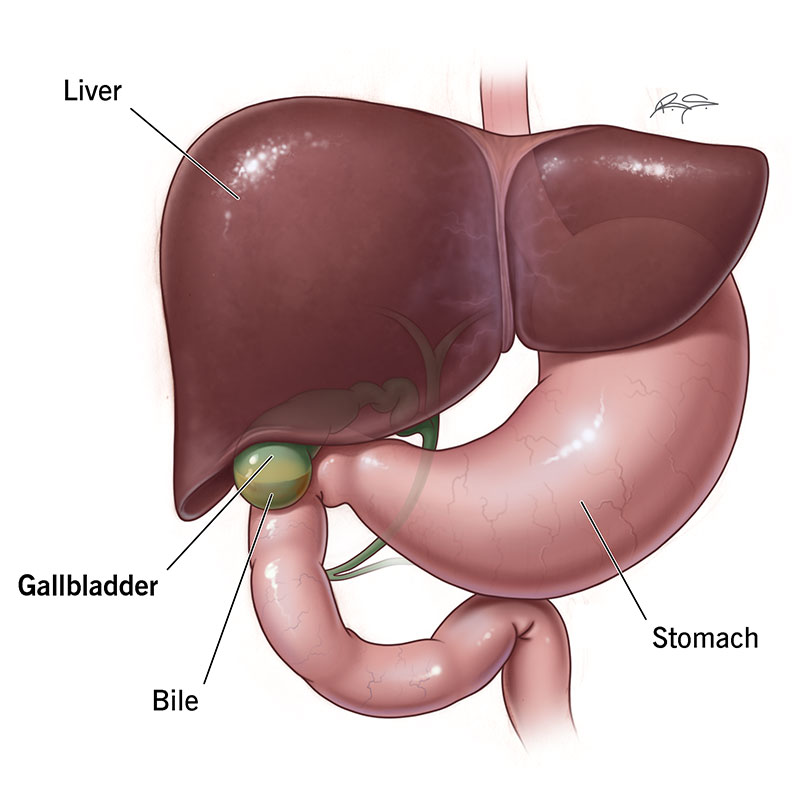
After food consumption, especially fatty foods, your gallbladder releases this concentrated bile into your small intestine, helping to break down fats.
Here’s the reassuring part: while your gallbladder plays a role in digestion, it’s not essential for a healthy life. Many people live perfectly well without it, which is why surgical removal is often recommended for troublesome gallstones.
Gallstones: Unpacking Those Hardened Deposits
Simply put, gallstones are hardened deposits that can form in your gallbladder or, less commonly, in your bile ducts.
These stones vary greatly in size, from as tiny as a grain of sand to as large as a golf ball. You might develop just one, or many can form at the same time.
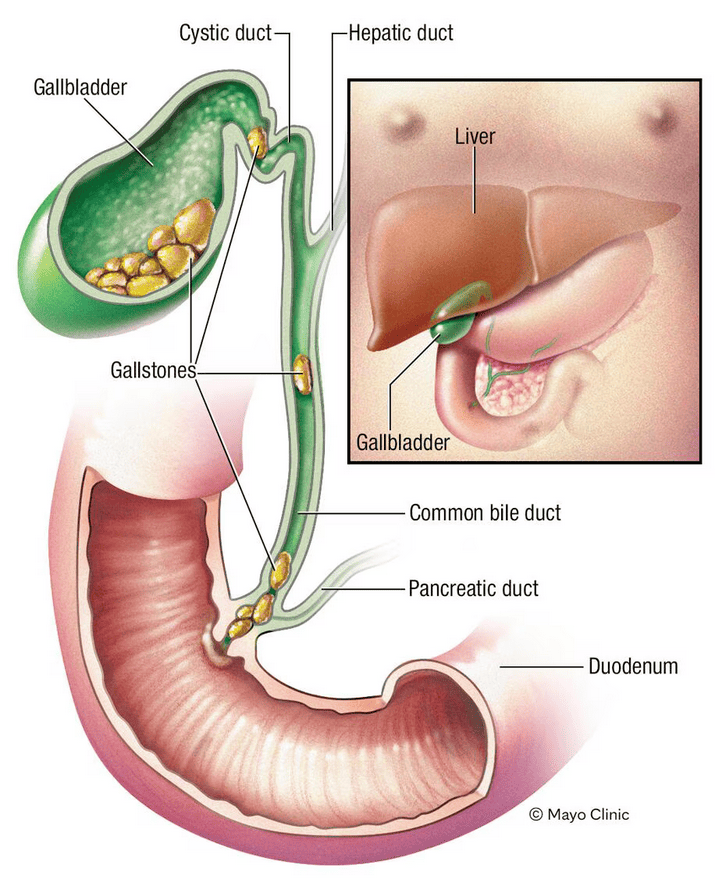
There are two main types of gallstones:
- Cholesterol stones
These are the most common, making up about 80% of cases. They’re typically yellowish-green which forms due to undissolved cholesterol build up. - Pigment stones
These darker, smaller stones form when there’s too much bilirubin (a waste product) in your bile, often linked to certain medical conditions.
Gallstones form when your bile contains too much cholesterol, too much bilirubin, or not enough bile salts. Sometimes, if your gallbladder doesn’t empty properly, bile can become overly concentrated, leading to the formation of crystals that eventually harden into stones. Factors like obesity, pregnancy, rapid weight loss, and certain diseases can increase your risk.
Recognising the Signs: When to Pay Attention
Knowing the symptoms of gallstones can help you seek timely care. Some of the classic signs you should look out for are:
- Sudden and rapidly intensifying pain in the upper right portion of your abdomen.
- Pain that radiates to your back or right shoulder blade.
- Nausea and vomiting.
- Bloating or a feeling of fullness.
It’s crucial to be aware of more serious warning signs that might indicate complications like cholecystitis (gallbladder inflammation) or pancreatitis (inflammation of the pancreas):
- Jaundice (yellowing of the skin or eyes)
- Fever and chills can be signs of infection
- Intense, unbearable pain that doesn’t subside
If you experience these severe symptoms, it’s important to seek immediate medical attention. Don’t delay, as prompt treatment can prevent further complications.
Uncover the good and bad cholesterol through healthier eating and living habits for the best you, in this article: HDL and LDL Cholesterol: What’s the Difference?
How Are Gallstones Diagnosed?
When you consult a doctor about suspected gallstones, they’ll typically use a combination of methods to confirm the diagnosis. These can range from:
1. Abdominal Ultrasound
Abdominal ultrasound is often the first and most common diagnostic test to detect gallstones.
It is a quick, non-invasive test that uses sound waves to painlessly create detailed images of your gallbladder, helping to easily identify any stones.
2. MRCP (Magnetic Resonance Cholangiopancreatography)
An MRCP is needed if your doctor suspects gallstones have moved out of the gallbladder and into your bile ducts (the tubes that carry bile from the liver to the small intestine).
This specialised type of MRI scan provides detailed images of the bile ducts, pancreatic duct, and surrounding organs. It is particularly useful for identifying blockages or narrowing in these ducts that might be caused by gallstones, which can lead to more serious complications like jaundice or pancreatitis.
3. Blood Tests
Your doctor will also typically order blood tests to check on your overall health and help identify any complications. These blood results will help your doctor determine:
- Any signs of infection or inflammation, which might indicate an infected gallbladder (cholecystitis)
- Your liver function to see if the bile ducts are blocked or if your liver is under strain
- If pancreatitis is suspected through the levels of your pancreatic enzymes
With these combinations of diagnostic methods, your doctor can accurately determine if you have gallstones, assess their location, and identify any related complications, allowing them to recommend the most appropriate treatment plan for you.
Surgical Options: When Removal is the Best Path
For symptomatic gallstones, surgical removal of the gallbladder, known as a cholecystectomy, is the most common and effective treatment.
1. Laparoscopic Cholecystectomy
Today, laparoscopic cholecystectomy is the preferred method for gallbladder removal. It’s a minimally invasive procedure, meaning it’s performed through several small incisions, rather than one large one.
- Procedure
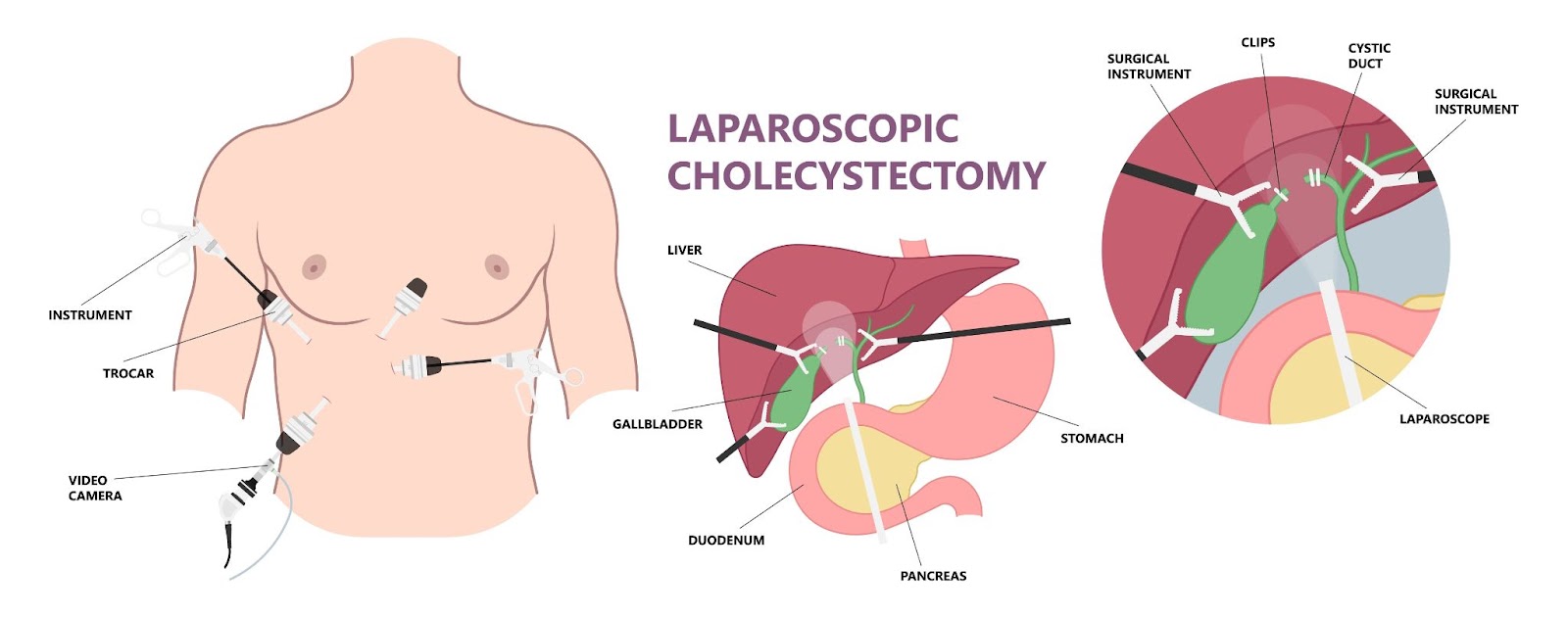
During the procedure, your surgeon uses a tiny video camera called a laparoscope and special instruments inserted through these small openings. They’ll use the camera to get a clear view inside your abdomen, allowing them to carefully and precisely remove your gallbladder.
- Benefits
The benefits of this modern approach are significant. You can expect less pain, smaller scars, and a much faster recovery time compared to traditional open surgery.In fact, most patients feel well enough to return to light activities within just a few days and achieve a full recovery within a few weeks.
- Success Rates
What’s more, laparoscopic procedures have an excellent track record, boasting a high success rate. Approximately 90% of patients experience lasting relief from their gallstone symptoms after the surgery, helping you get back to a comfortable, healthy life.
2. ERCP (Endoscopic Retrograde Cholangiopancreatography)
While laparoscopic cholecystectomy focuses on removing the gallbladder itself, sometimes gallstones can escape the gallbladder and move into the bile ducts.
The ERCP procedure, while it involves an endoscope, is also designed with your comfort in mind.
You will receive sedation before the procedure, which will make you very relaxed and often quite drowsy, even to the point of not remembering much of the procedure itself. Some patients might even opt for general anaesthesia for full sleep.
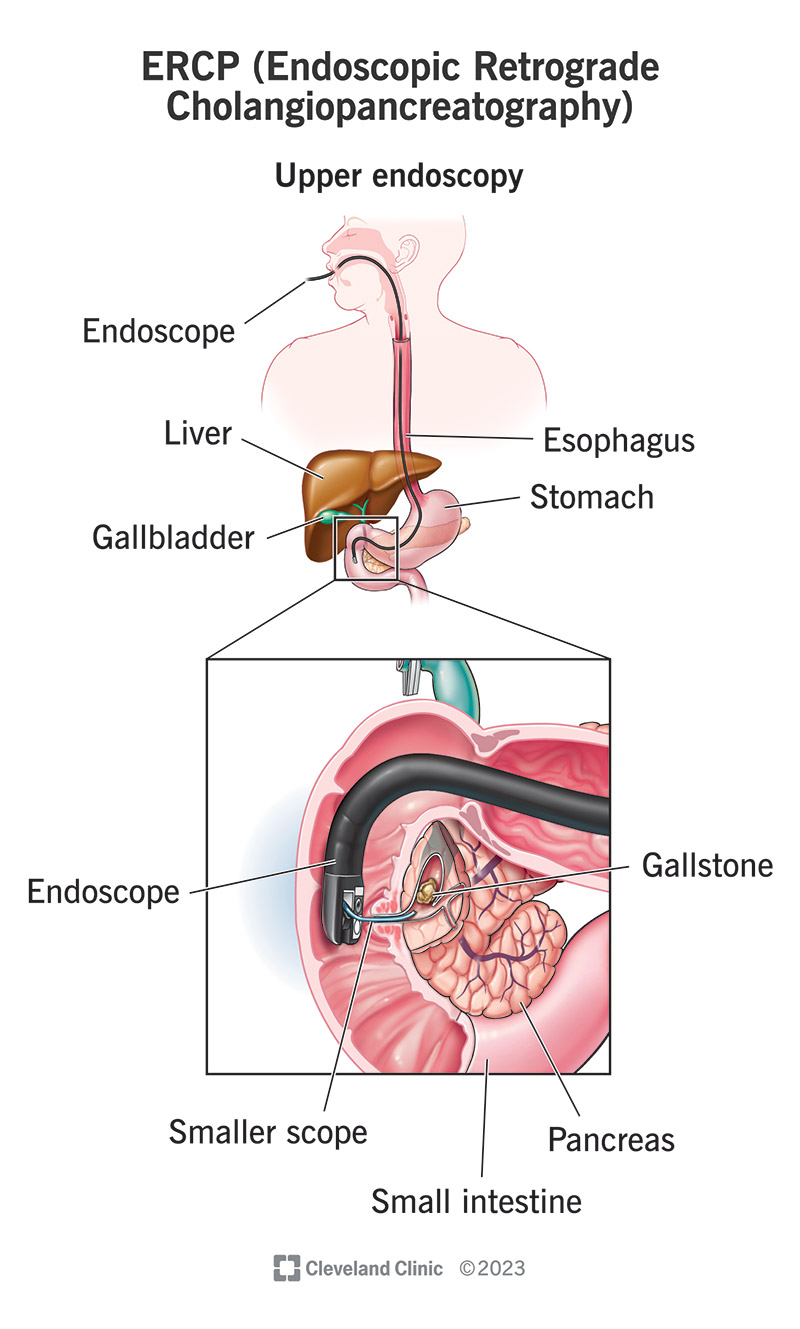
The endoscope is flexible and carefully guided by your healthcare team that prioritises your safety and comfort throughout the entire process, closely monitoring your vital signs.
While you might feel a slight sensation of fullness from the air used, this is typically minor and temporary.
The primary goal of an ERCP is to relieve the problem directly, such as removing a painful stone blocking a bile duct, offering immediate and significant relief. Our skilled specialists perform this procedure with great expertise, focusing on resolving your issue as smoothly as possible.
ERCP is a specialised, minimally invasive procedure used to:
- Remove stones directly from the bile ducts. During an ERCP, a flexible, lighted tube (endoscope) is gently guided down your throat, through your stomach, and into the area where the bile ducts connect to your small intestine. Your doctor can then use small tools passed through the endoscope to locate and remove the trapped gallstones.
- Clear blockages. Besides removing stones, an ERCP can also help to widen narrowed ducts or place a small tube (stent) to keep the duct open, ensuring bile can flow freely.
ERCP can be done before or after gallbladder removal, depending on your specific situation, or if for some reason, traditional surgery isn’t an option for you.
Your gut is like a second brain that needs infinite care! Dive into how you can Improve Your Gut Health with Island Hospitals’s Gastroenterology FAQs.
Non-Surgical Options: For Select Cases
While surgery is the most definitive and common treatment for symptomatic gallstones, it’s worth noting that in very specific and limited situations, non-surgical approaches might be considered.
However, these are generally not suitable for everyone and are often less effective, especially for gallstones that are already causing discomfort or complications.
Oral medications like Ursodiol can sometimes be prescribed to you. Its primary function is to dissolve certain types of gallstones, specifically those made primarily of cholesterol. However, there are significant limitations to its use:
- Effectiveness: It’s only effective for small, cholesterol-based stones that are not causing severe symptoms. It does not work on pigment stones (which are made of bilirubin) or larger stones.
- Timeframe: The process of dissolving gallstones with Ursodiol is incredibly slow, often taking many months, or even years, to show results. This makes it impractical for individuals experiencing acute pain or frequent attacks.
- Recurrence: Even if successful, gallstones can often recur once the medication is stopped.
- Recommendation: Due to these limitations, Ursodiol is generally not recommended for symptomatic gallstones where patients are experiencing pain or other issues, as faster, more definitive relief is usually needed. It might be considered for patients who cannot undergo surgery due to other health conditions, and only after careful discussion with their doctor.
What to Expect After Gallbladder Removal: Your Roadmap to Recovery
The thought of life without a gallbladder might bring up questions and even some anxieties. Rest assured, with the right information and support, you can look forward to a smooth recovery and a comfortable new normal.
Recovery Timeline: Getting Back on Your Feet
Thanks to minimally invasive laparoscopic techniques, recovery is often quicker than you might expect:
- Discharge: Most patients are discharged the same day or the next day after laparoscopic surgery.
- Light Activity: You can typically resume light activities, like gentle walking, within 3–5 days.
- Normal Routine: Expect to return to your normal routine, including work, within 7–10 days. Avoid strenuous activities and heavy lifting for about 4 weeks.
Managing Post-Surgery Effects: What to Anticipate
- Temporary Diarrhea
This is a common post-surgery effect. Without a gallbladder to store and concentrate bile, bile flows directly into your small intestine, which can sometimes lead to temporary loose stools, especially after fatty meals.To manage this, start with low-fat meals, and gradually reintroduce different foods. Eating smaller, more frequent meals can also help.
- Gas or Bloating
Some people experience gas or bloating as their digestive system adjusts. This usually subsides as your body adapts.
- Emotional Adjustment
It’s completely normal to feel a bit anxious about dietary changes or how your body will adapt.
If you find yourself feeling overwhelmed or anxious, our team at Island Hospital can connect you with resources, including counseling services, to help you navigate this emotional transition. You’re not alone in this journey.
Find Relief at Island Hospital’s Gastroenterology Centre!
If you’re experiencing symptoms of gallstones or have questions about treatment options, our expert team at Island Hospital is here to help. We invite you to explore our Gastroenterology medical speciality page to learn more about our services.
Schedule a consultation with one of our experienced specialists today and take control of your digestive health.
FAQs
Is gallbladder stone removal surgery risky?
Laparoscopic cholecystectomy is a very common and safe procedure. While all surgeries carry some risk, laparoscopic procedures have a high success rate, with serious complications being rare. Our experienced surgeons at Island Hospital prioritise patient safety and will discuss all potential risks with you beforehand.
Will I need open surgery?
In most cases, laparoscopic surgery is performed. Conversion to open surgery (a larger incision) is rare, occurring in only about 5% of cases due to unforeseen complications or anatomical variations. Our surgeons are skilled in both techniques and will always choose the safest approach for you.
Will I gain weight after my gallbladder is removed?
There is no direct link between gallbladder removal and weight gain. Any weight changes post-surgery are typically related to dietary habits and activity levels. Focusing on a healthy, balanced diet and maintaining regular exercise will help you manage your weight.
Can I get gallstones again if my gallbladder is gone?
Since your gallbladder is removed, you cannot form new gallstones in the gallbladder itself. However, very rarely, small stones can form in the bile ducts. This is uncommon, and if it occurs, it can often be managed with an ERCP.
Is it safe to get pregnant after gallbladder surgery?
Yes, it is generally safe to get pregnant after gallbladder surgery once you have fully recovered and your doctor gives you approval. There are no known long-term adverse effects on fertility or pregnancy.
Does not having a gallbladder affect my energy levels? Most people do not experience a change in energy levels after gallbladder removal. Your body adapts well to digesting fats without the gallbladder. If you feel persistently low on energy, it’s best to consult your doctor to rule out other underlying causes.
Take Charge of Your Health Today!
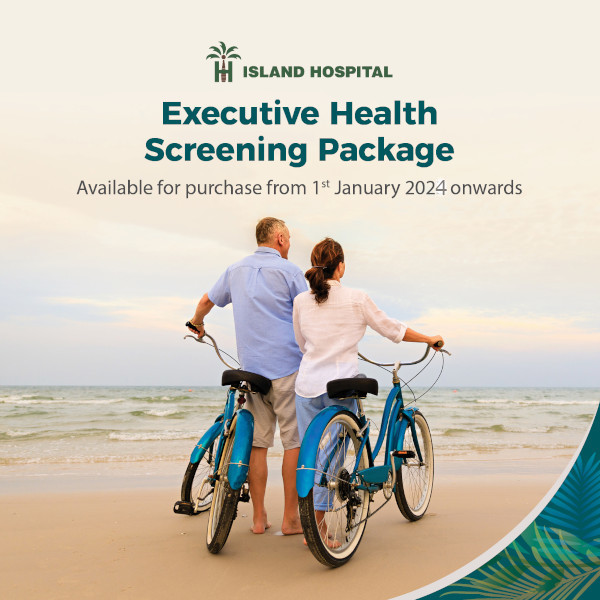
We’re offering our comprehensive Executive Health Screening Package at only RM760 – giving you a complete head-to-toe health assessment for peace of mind.
Our package features vital health screenings, including Cardiovascular Assessment, Full Blood Picture, Radiological Screening, Diabetes Screening, Kidney Function Test, and much more.
What’s Included in Your Screening Experience:
✔ Physical examination
✔ Complete medical report
✔ Consultation by Health Screening Physician/Specialist
✔ Choice of light refreshments
✔ Exclusive Island Hospital woven bag






